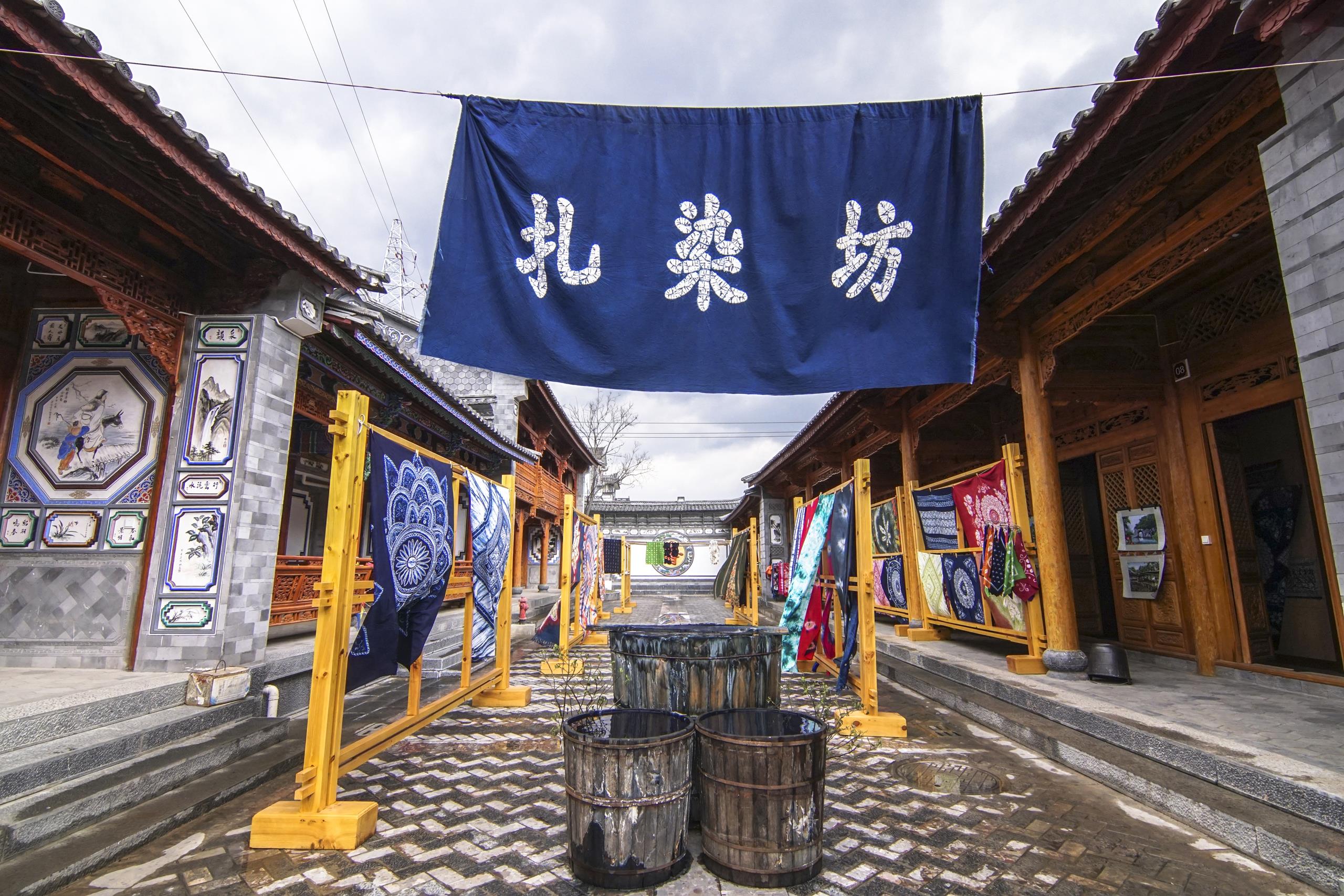


The art of tie dye originated in Zhoucheng Village, Xizhou County in Dali, Yunnan, which is also known as the “Bai Village of Tie Dye.”
The Bai people have lived in Yunnan for more than 2,000 years. Their complex culture blends influences of Taoism, Buddhism, local deity worship and Confucianism. They are highly creative and are admired for the grace with which they incorporate the beauty of nature into their artistic creations.
One of the Bai people's favorite art forms is tie dye. The craft has been handed down from one generation to the next for centuries. The creation of tie dye fabrics is a complex process that reflects the enduring principles of the ancient Bai culture.
The process of creating tie dye textiles is a painstaking procedure that breaks down to 16 steps.
- It begins with creating the dye. The dark blue color of tie dye comes from the Isatis plant. Isatis root is mixed with soda and water, stirred every day and fermented for two weeks. Then the dye is drained of excess water and the dye is ready to use.
- Patterns are drawn on white paper, then transferred to a plastic sheet by piercing holes in the paper, tracing the lines of the designs onto the plastic sheet.
- Holes are poked through the pattern to identify the stitching area of the fabric.
- White cloth is placed under the plastic sheet and the dye is painted onto the plastic, allowing the dye to flow through the plastic onto the cloth and transferring the pattern onto the paper.
- The pattern is stitched into the cloth, using different patterns to create various images, such as butterflies, bees and different kinds of flowers.
- The cloth is washed with warm water and bleached to remove waxes and oils in the fabric.
- The cloth is bleached to set the color and assure the penetration of the dye.
- The dye is prepared by mixing the proper proportions for the amount of cloth being dyed.
- Cloth is placed into the dye solution for about 45 minutes, while stirring the dye until it reaches the desired shade. Then the fabric is pulled out of the dye and allowed to dry and oxidize for at least 20 minutes.
- The newly dyed cloth is dried in the sunshine.
- Stitches are removed.
- Excess dye is washed out of the fabric.
- The fabric is bleached to clarify the patterns and brighten the white areas of the design.
- The fabric is dried a second time.
- The cloth is unwound, straightened and ironed.
- Stitching is applied along the lines of the pattern, and the work is complete.
You can observe the process of tie dyeing by stopping into a Tie Dye workshop in Zhoucheng Village in Yunnan, where you can also buy the finished products, handcrafted by villagers. You may also be able to try your hand at the craft yourself in one of the workshops, under the guidance of a skilled artisan.
Today, tie dye craftspeople sell their products over the Internet, spreading the ancient Dai culture and spirit around the world.
Dali Bai Autonomous Prefecture






